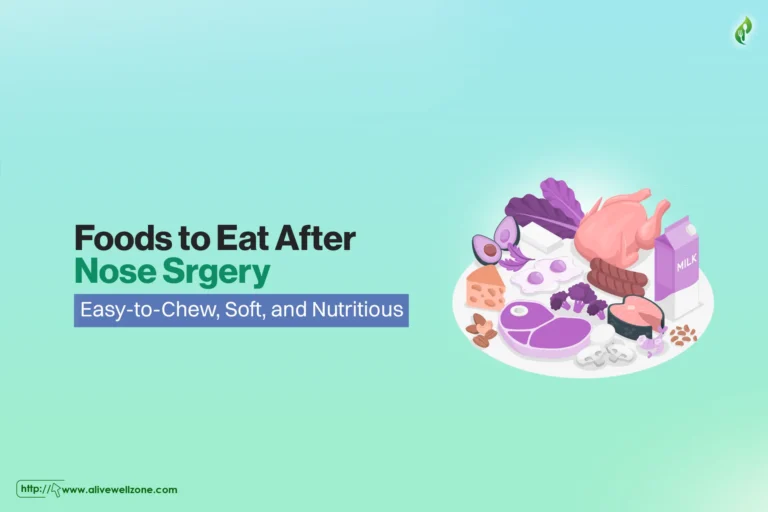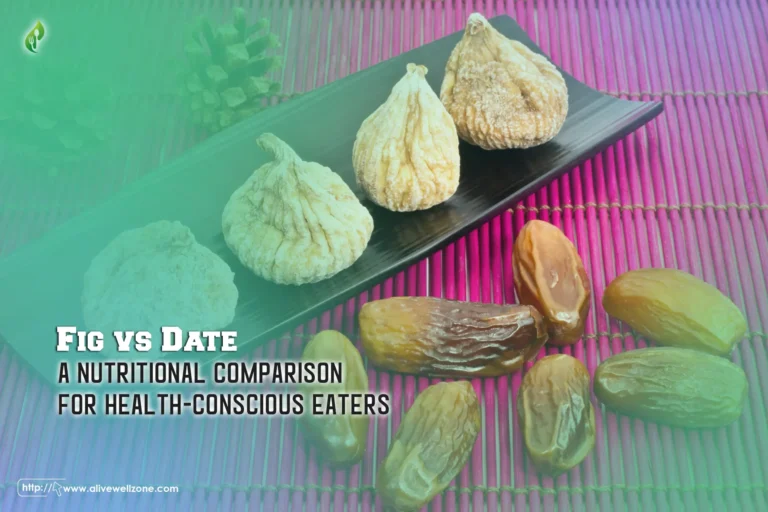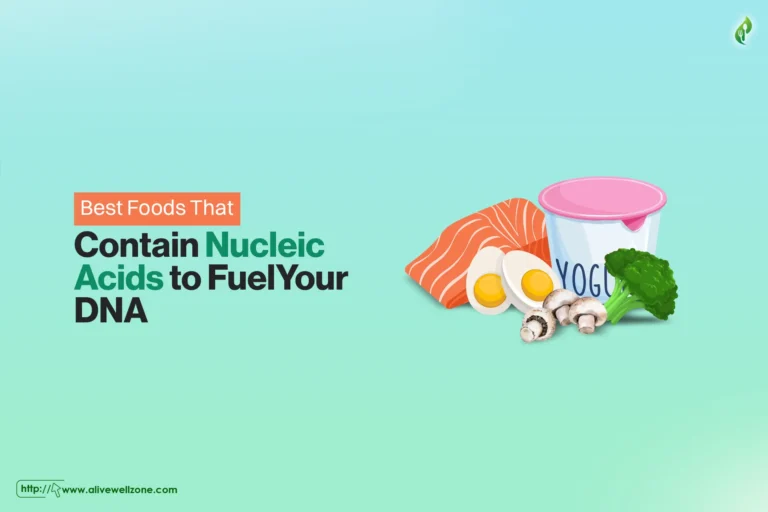
Last Updated on September 27, 2024 by Helena Akter
Curious about what foods contain fluoride? Ever wondered if your diet supports your dental health? You’re not alone. Many people focus on brushing and flossing, but overlook fluoride! In fact, you’re more likely to get cavities and decay with less fluoride.
That’s why you should eat fluoride-rich foods such as water, spinach, raisins, grapes, apples, fish (like salmon and sardines), black tea, and potatoes. These foods help strengthen teeth, prevent cavities, and fight harmful bacteria.
Remember, fluoride intake varies by age, from 0.01mg to 4 mg per day. Plus, we’ll talk about the requirements in detail. Plus, you’ll know the benefits of eating fluoride foods.
Key Takeaways
- Fluoride Sources: Fluoride is found in many foods and drinks, including water, spinach, fish, black tea, and potatoes. It helps protect teeth by strengthening enamel and fighting cavities.
- Health Benefits: Fluoride strengthens teeth, fights harmful bacteria, and reduces the risk of cavities. It’s especially important for people with dry mouths and those with dental work like crowns or braces.
- Fluoride Needs: The recommended daily amount of fluoride varies by age and gender. It ranges from 0.01 mg for infants to 4 mg for adult males. Pregnant and lactating women need around 3 mg daily.
- Overexposure Risks: Too much fluoride, especially in drinking water, can cause dental fluorosis in kids. The EPA recommends fluoride levels in water not exceed 2.0 mg/L. Water filters or bottled water can help reduce fluoride intake if necessary.
Top 7 Foods That Have Fluoride for Your Dental Health
The National Library of Medicine (NLM says how much fluoride you need depends on your weight. See, fluoride is a mineral you can find in many foods and drinks. It helps keep your teeth healthy.
So, here are some foods and drinks with fluoride —
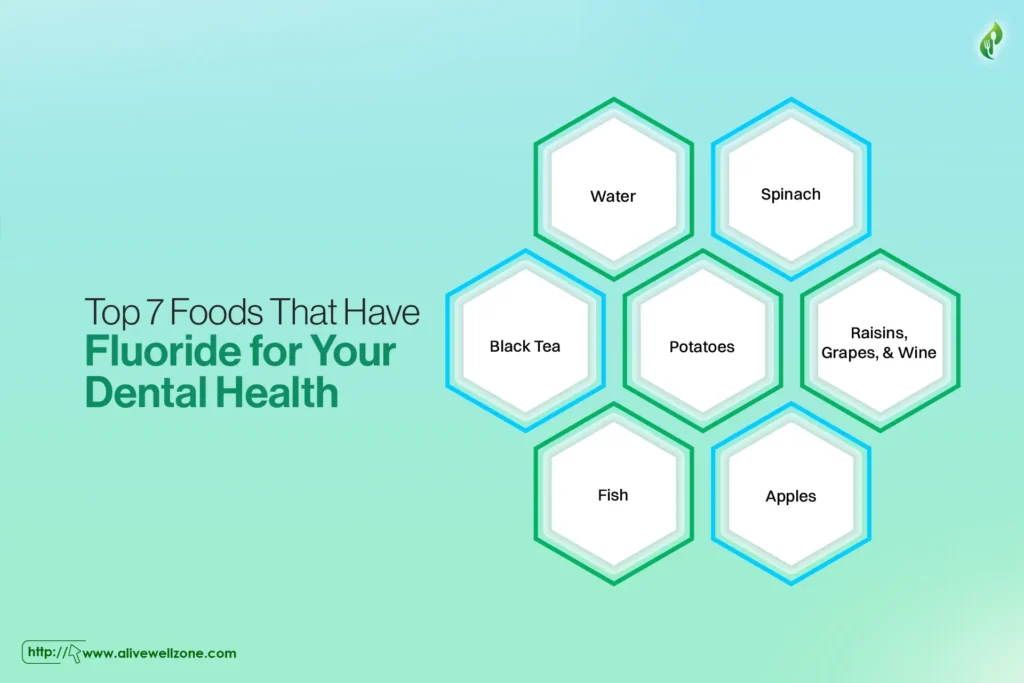
1. Water
Fluoride is often found in water, especially in areas with fluoridated water supplies. In the United States, about 73% of people who use public water get water with fluoride levels set at 0.7 milligrams per liter.
It helps lower tooth decay by around 25% in both kids and adults, according to the CDC. Even in areas without added fluoride, the natural fluoride in water can still help dental health.
2. Spinach
If you’re wondering what foods contain fluoride naturally, spinach is a great example. It’s a good source of fluoride, in addition to vitamins and minerals.
With 0.07 mg of fluoride per cup, it can help meet your daily fluoride needs. Spinach is also rich in Vitamin C, which strengthens the immune system and fights infections.
Leafy greens like spinach, kale, and chard are great for dental health because they have a lot of calcium, which helps repair tooth enamel and prevents tooth decay.
Plus, the B vitamins and folic acid in spinach can protect your gums from gum disease.
3. Raisins, Grapes, and Wine
Raisins, grapes, and wine all have fluoride, but the amount is different.
Raw grapes have some fluoride which is 0.08 ppm. However, raisins have 2.34 ppm fluoride which is much more because they’re dried. Wine, especially white wine, has 2.02 ppm fluoride. Whereas, the red wine contains only 1.05 ppm!
So, whether you eat grapes, raisins, or drink wine, you’re getting fluoride.
But watch out for added sugar in raisins and grape juice. If you want to know what foods have fluoride, these grape things are good choices.
4. Apples
Among foods that contain fluoride, apples are a tasty and nutritious option. Apples can fit well into your healthy eating habits. They have fluoride, especially if you eat the skin.
In fact, a medium-sized apple with the skin has about 0.01 milligrams of fluoride. Apples also have vitamins like thiamin, riboflavin, and B6. Plus, they’re high in fiber, which helps make more saliva. And saliva is good for your teeth!
Moreover, studies have shown that the polyphenols in apples can help reduce plaque. So, to get all the benefits for your teeth, eat the apple skin too.
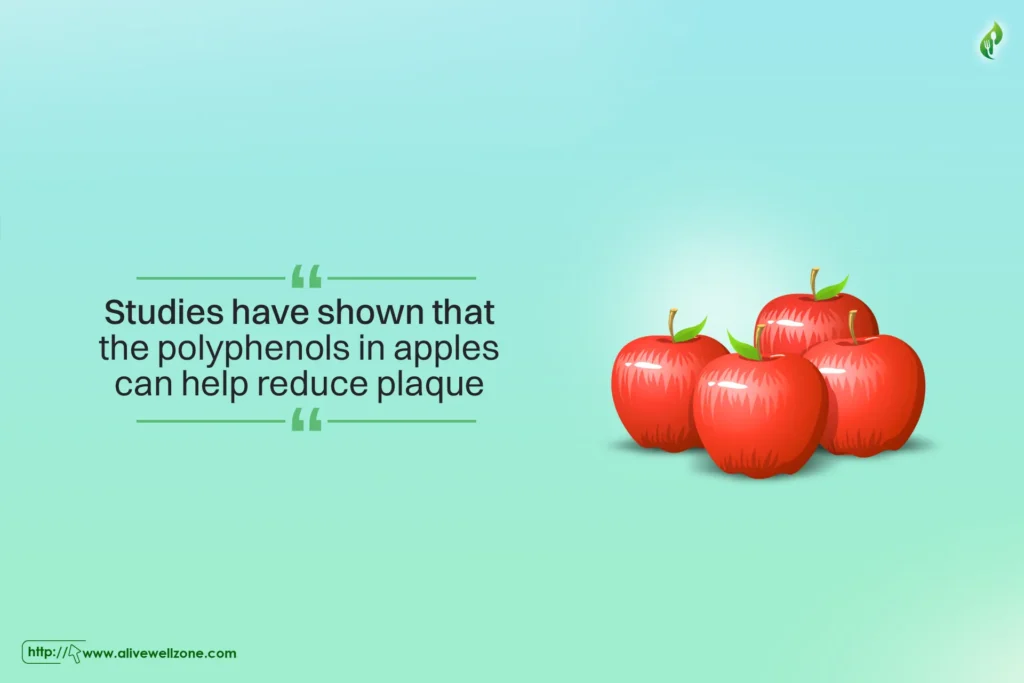
5. Fish
Some canned fish, like salmon and sardines, have a lot of fluoride. Just 3 ounces of sardines can give you almost 0.3 mg of fluoride. That’s because fluoride builds up in their bones as they grow.
These fish are also full of calcium and vitamin D, which are important for strong teeth. Plus, salmon has a lot of omega-3, which is good for your gums. So, eating these fish is a good way to get more fluoride.
If you’re looking for inspiration, here are some healthy salmon recipes you can make every day.
6. Black Tea
Black tea gives you caffeine and fluoride. Some people think the fluoride comes from the tap water, but it’s actually in the tea leaves.
Using tap water can add a little more fluoride, but the tea already has a lot. An 8-ounce cup of black tea can have between 0.2 and 1.4 milligrams of fluoride, depending on the water.
However, black tea can stain your teeth more than coffee. So, it’s one of the top foods to avoid after teeth whitening.
7. Potatoes
Potatoes have some fluoride, especially russet potatoes, which have 0.49 ppm of fluoride. But how you cook the potatoes matters!
Baked potatoes and hash browns have twice as much fluoride as French fries!
That said, any kind of potato, cooked any way, will have some fluoride, with French fries having the least. So if you want to have some fries with your burger, go ahead!
Recommended Requirements of Fluoride By Age and Gender
The right amount of fluoride is different for each person. It can be from 0.01mg to 4 mg every day. Here’s a complete chart of the requirements —
| Life Stage | Age | RDA |
| Infants* | 0 to 6 months old | 0.01mg |
| 7 to 12 months old | 0.5mg | |
| Children | 1 to 3 years old | 0.7mg |
| 4 to 8 years old | 1mg | |
| Males | 9 to 13 years old | 2mg |
| 14 to 18 years old | 3mg | |
| 19+ years old | 4mg | |
| Females | 9 to 13 years old | 2mg |
| 14 to 18 years old | 3mg | |
| 19+ years old | 3mg | |
| Pregnancy | 14 to 18 years old | 3mg |
| 18+ years old | 3mg | |
| Lactation | 14 to 18 years old | 3mg |
| 18+ years old | 3mg |
What Are the Benefits of Fluoride?
Fluoride is important for healthy teeth. It helps make your teeth stronger and less likely to get cavities. It works by repairing damaged areas and stopping bad bacteria from growing.
Here’s how fluoride helps —
- Strengthens teeth: Fluoride helps repair damaged areas in your teeth and makes them stronger.
- Fights bacteria: Fluoride helps kill harmful bacteria that can cause cavities.
- Prevents cavities: Fluoride makes your teeth more resistant to acid attacks from bacteria.
- Protects dry mouths: Fluoride can help people who have dry mouths, which can increase the risk of cavities.
- Supports dental work: Fluoride can help protect areas around dental work, like crowns and braces.
- Strengthens Enamel: Fluoride helps in remineralization, where lost minerals are replaced in tooth enamel to protect against decay.
- Supports Overall Oral Health: Fluoride reduces tooth decay and the need for dental fillings or other treatments, thus promoting better oral hygiene.
What Happens If Water Has Too Much Fluoride?
If there’s too much fluoride in your drinking water, it can be bad for your health, especially for kids. The water company will tell you if your water has too much fluoride.
It’s a rare problem, but you should be careful. Here are a few things —
- The EPA says there should be no more than 2.0 mg/L of fluoride in drinking water. Too much fluoride can cause dental fluorosis, a problem affecting kids’ teeth when growing.

- Kids under 8 should drink a different kind of water if their tap water has more than 2.0 mg/L of fluoride. You can use bottled water with less fluoride, especially for making baby formula.
- If your water has 4.0 mg/L of fluoride or more, talk to your health department. You can also use a water filter to remove fluoride.
- Don’t worry about bathing or cleaning with water that has too much fluoride. Fluoride doesn’t get into your skin.
Final Words
Fluoride is good for your teeth, and you can get it from many foods. We’ve seen what foods contain fluoride, from water, spinach to even potatoes.
These foods help stop cavities and make your teeth stronger. You can add these foods to your diet to have healthier teeth. However, you must balance fluoride intake to avoid overexposure
So, watch how much you eat and enjoy your strong, healthy smile!
FAQs
Does boiling water remove fluoride?
No, boiling water doesn’t remove fluoride. In fact, boiling can increase the concentration of fluoride. While boiling helps eliminate chlorine and other germs, it does not reduce fluoride levels. Instead, the mineral becomes more concentrated as water evaporates.
What is a symptom of fluoride deficiency?
A key symptom of fluoride deficiency is tooth decay. Without enough fluoride, enamel weakens, making teeth more prone to cavities. Additionally, fluoride deficiency can weaken your bones, increasing the risk of fractures.
How long does fluoride stay in the body?
Fluoride is typically cleared from the bloodstream within 24 hours, with a significant portion excreted through urine. It can remain in bones and teeth for several years. The fluoride usually gets incorporated into the bones and enamel, making them stronger.
Do bottled waters contain fluoride?
Fluoride isn’t present in most bottled water. There’ll be a label if it does. Some bottled water comes from municipal supplies and may contain fluoride. However, if fluoride isn’t added while bottling, the label won’t mention it.



